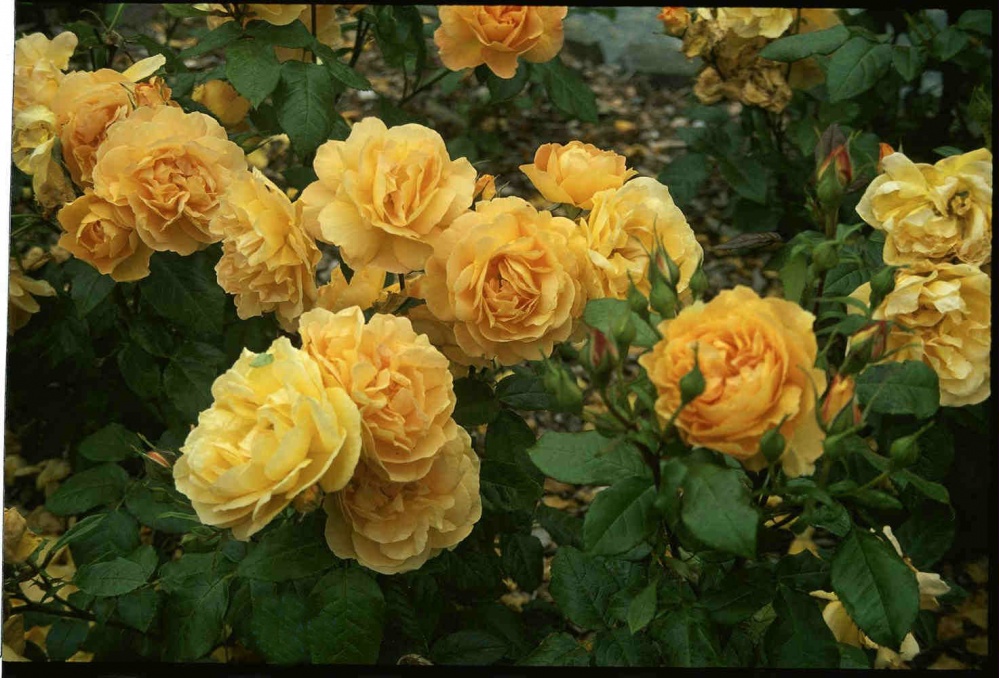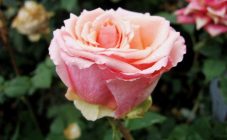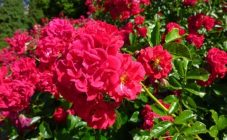The floribunda class includes many varieties, including the Amber Queen rose. Floribunda is a kind of intermediate stage between polyanthus and hybrid tea roses, since it was the polyanthus Mignonette Guillot rose and the Souvenir de Mme tea rose that served as the basis for breeding the first flower belonging to this class.
general information
Floribunda Amber Queen is a bushy plant with medium to large flowers ranging from 4 to 8-10 cm in diameter. The color and shape of the inflorescences can also vary greatly, as well as the type of petals. Within the class, there are both low and medium, and tall plants, the height of which exceeds 1 m. These decorative flowers are quite resistant to cold.
Amber Queen rose is one of the varieties belonging to this class. The flower was bred in the 1980s in the UK by crossing the Typhoon tea rose and the Soulhampton floribunda.
Description of Amber Queen
This flower belongs to medium-sized bush plants. It is well suited for growing in the middle lane, because it can withstand frosts down to -20 degrees, and also because this variety is resistant to diseases such as powdery mildew and black spot. The flower belongs to the early varieties - it blooms by the end of May and blooms until the first frost, closer to mid-October.
The typical golden amber color of the petals is indicated by the name - Amber or Amber, that is, amber: the light can change from light yellow to dark pink. The characteristic size of the inflorescence is 6-8 cm.
Sprawling bushes, can reach 60-70 cm in width. One of the features of this variety is that its foliage changes its color over time - from a bronze shade to bright green, with yellowish veins.
Growing features
The choice of a place to plant Amber Queen roses plays an important role. This plant does not like too bright sunlight and high levels of humidity. Although the bush will bloom even if it is planted in a well-lit area, the flowers will still be small. In conditions of constant humidity, root rot can begin.
Windy weather can also become a problem for a plant - inflorescences can be deformed from a strong wind.
Thus, when choosing a place where the bush will bloom, it is worth giving preference to a flat, protected from the wind, area in the shade or partial shade, and not under the bright sun.
It is necessary to plant a bush in a deep hole, and so that the root collar - the curved gap between the roots and the trunk - is underground along with the rhizome. If the soil is acidic, you can fertilize the ground with wood ash before planting a bush.
Amber Queen floribunda is rarely watered, about once every two weeks, but in large quantities - the average amount of water for irrigation is 10 liters.
Advantages of the variety
Rose Amber Queen has a number of advantages that make it one of the most popular plants for growing in the middle lane.
These include:
- Attractive appearance.
- Relatively high frost resistance.
- Disease resistance.
- Long flowering period.
- Unpretentiousness.
The disadvantages of the variety can be attributed only to the need to carefully choose a place for planting a rose bush.
Observing all the requirements for care, you can grow a spectacular flower garden.














